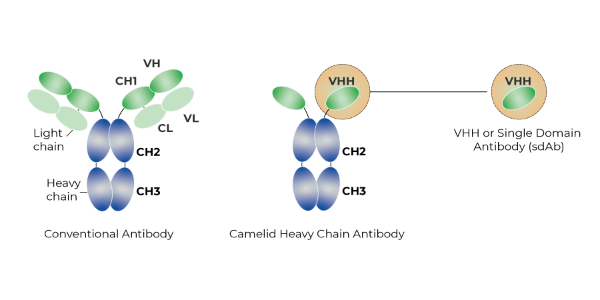Single Domain Antibodies (aka Nanobodies, VHH antibodies & camelid antibodies) are at the forefront of research in HIV, cancer, & other cell diseases.
Single Domain Antibodies: Tools for the Future?


Single Domain Antibodies (aka Nanobodies, VHH antibodies & camelid antibodies) are at the forefront of research in HIV, cancer, & other cell diseases.
The single-domain antibodies (sdAb), lack light chains, yet possess unique characteristics providing researchers a myriad of options not readily available with conventional antibodies. In comparison, the sdAbs boast significantly higher stability and are much smaller in size, only 15kd. As
The PD-1 protein is a negative co-stimulatory receptor that can bind two different but related ligands, PD-L1 and PD-L2. Upon binding, signals generated by PD-1 inhibit the activation of the immune response in the absence of “danger signals.” ProSci Inc.
Antibodies are characterized by versatility in form and in function: they are great communicators in the immune system, they can be used to visualize obscure targets, and can stabilize otherwise transient molecular states. In 2011, Brian K. Kolbilka and Robert